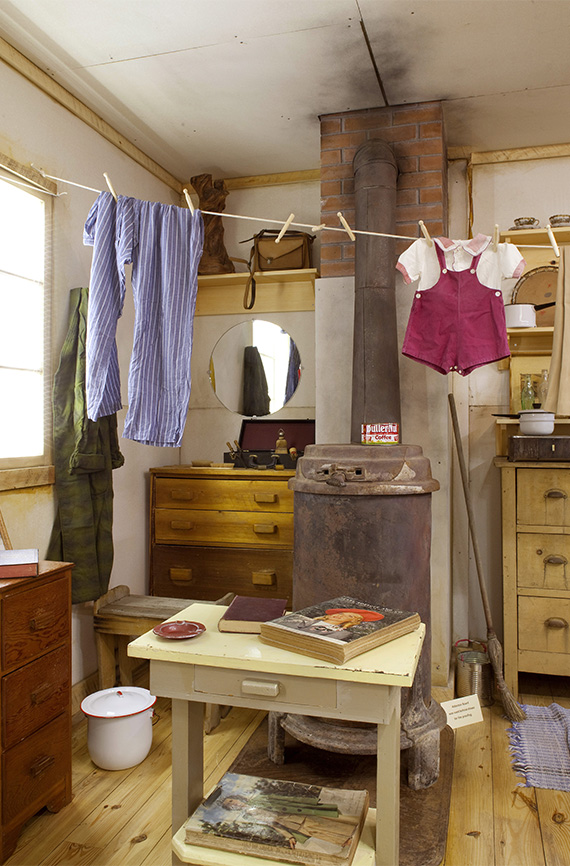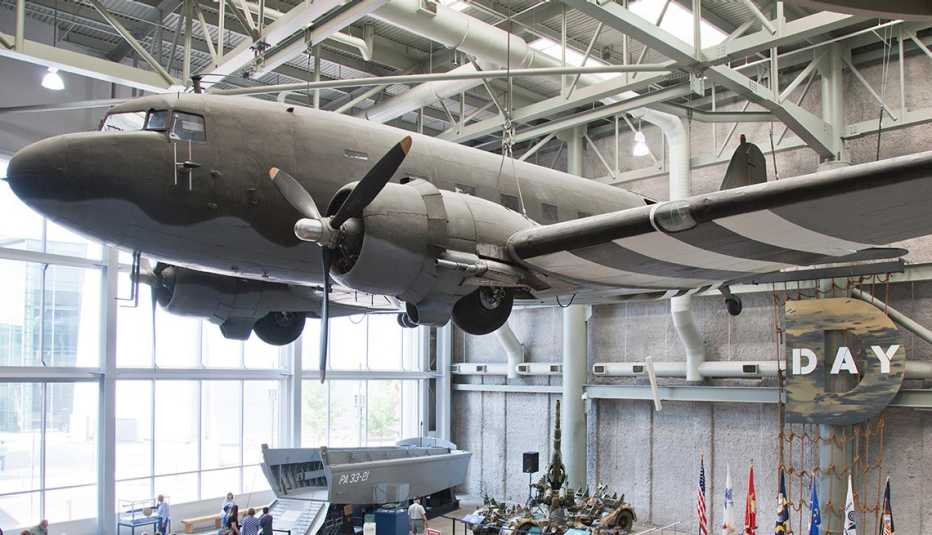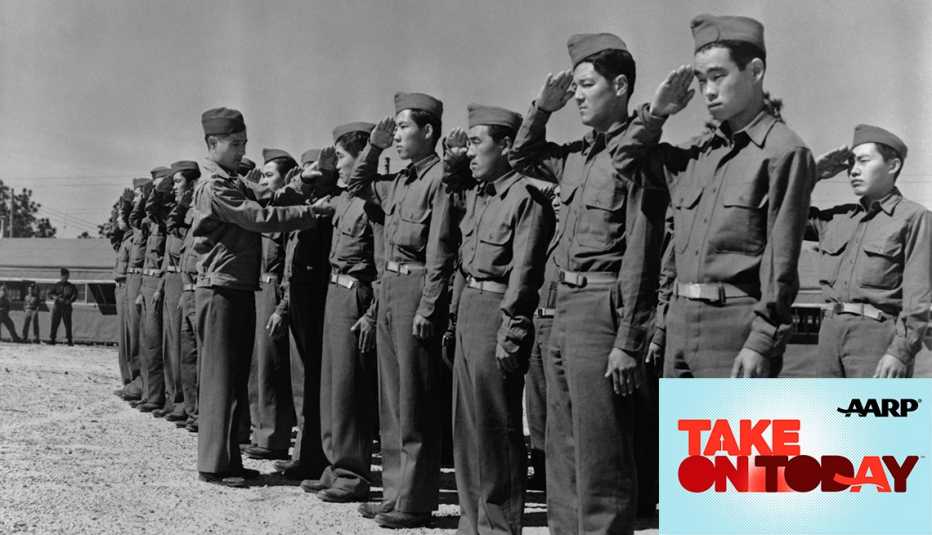Staying Fit

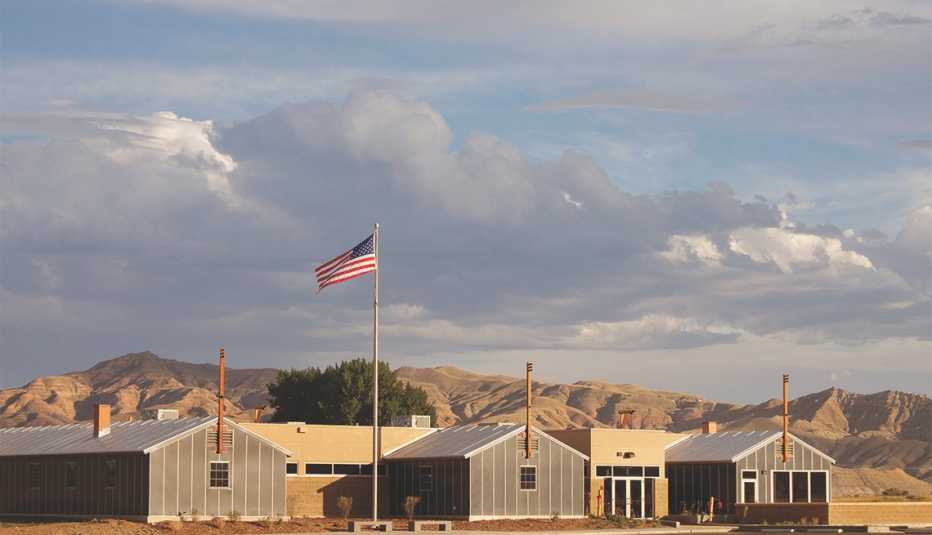
COVID-19 Update
En español | The Heart Mountain Interpretive Center is fully open, but masks are required indoors, regardless of one's vaccination status.
Looking out the large windows in the meditation room at the Heart Mountain Interpretive Center, the landscape looks as empty as it is rugged. Here in northern Wyoming's Bighorn Basin, hayfields and sagebrush steppe stretch for miles, until Heart Mountain breaks the horizon with its 2,000-foot rise from the surrounding flats.
While it's peaceful here today, between August 1942 and November 1945 this desolate area was home to Wyoming's third-largest community, with a population of about 10,000. But Heart Mountain wasn't a city, it was one of 10 relocation centers established in the West by the federal government's War Relocation Administration. After the Japanese bombed Pearl Harbor in December 1941, the government forced more than 120,000 people of Japanese descent — about two-thirds of them U.S. citizens — from their homes in California, Oregon, Washington and southern Arizona and into camps such as Heart Mountain.


AARP Membership— $12 for your first year when you sign up for Automatic Renewal
Get instant access to members-only products and hundreds of discounts, a free second membership, and a subscription to AARP the Magazine.
Today several of the former camps have museums and/or interpretive centers and are open to the public, including the Manzanar National Historic Site in California.

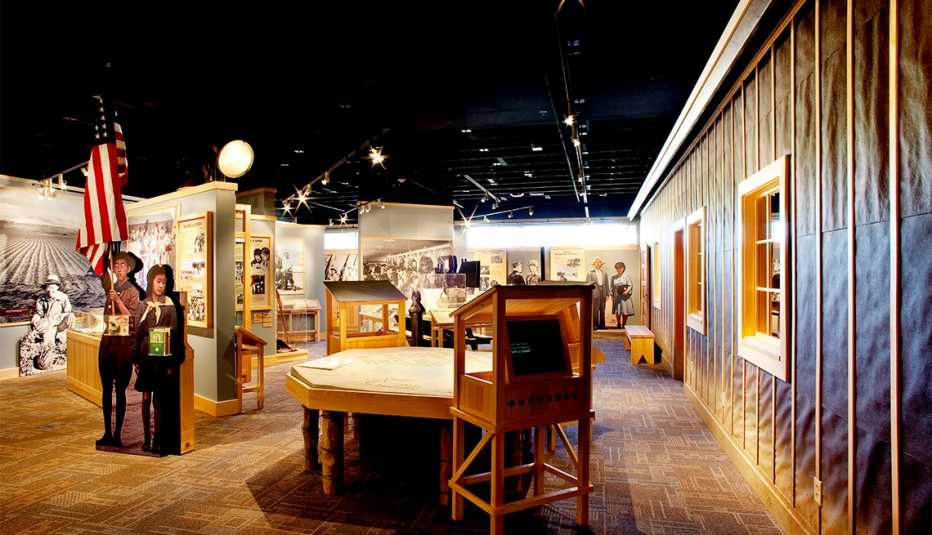
This Wyoming museum is unique, however, because people once forced to live there helped create it. “At Manzanar, the government listened to former incarcerees and took their input, but the former incarcerees understood that the story told would ultimately be the story the government wanted to tell,” says Dakota Russell, executive director of the Heart Mountain Wyoming Foundation. “At Heart Mountain, the stories from the incarcerees aren't filtered. A museum in the middle of nowhere like this can seem like a detour, but it's a detour so worth your while.”
Heart Mountain history
Plan your trip
Location: 1539 Road 19, off U.S. Highway 14A between Cody and Powell
Getting there: You have to drive to the interpretive center, which is almost equidistant from Cody (13 miles) and Powell (11 miles). There's no public transportation; on-site parking is free.
Visit: Daily from 10 a.m. to 5 p.m., May 15-Oct. 1; Wednesday through Saturday 10 a.m. to 5 p.m., Oct. 2-May 14; other visits by appointment.
Admission: $9 ($7 for seniors 62 and older)
Tours: The center is currently self-guided, but in September it will offer tours of the barrack and the hospital grounds that will be free with admission to the center.
Best season to visit: Annually, the last full weekend in July, the center hosts the Heart Mountain Pilgrimage, a gathering of former internees and their families that's open to the public. It includes public events at the center and in and around Cody and Powell. Former internees volunteer as docents at the center in the week leading up to the pilgrimage.
Accessibility: “Almost everything at the center is ADA accessible, including the barrack and the walking trail,” Russell says.
Following the Pearl Harbor attack in December 1941, the U.S. government ordered people of Japanese descent from their homes and moved them to makeshift “assembly centers,” established at places such as the Santa Anita racetrack and Los Angeles County Fairgrounds in California while the government built the 10 camps. It took 2,000 workers six months to construct 650 buildings at Heart Mountain, including 467 20-by-120-foot uninsulated, tar paper barracks furnished with military cots and potbelly coal stoves for heating (but no running water); a 150-bed hospital; workshops; churches; communal bathrooms; and mess halls. A barbed wire fence and nine guard towers surrounded the camp, on 740 arid acres between Cody and Powell. The first of the incarcerated people arrived in August 1942.
When the war ended in September 1945, all 10 internment camps disappeared as quickly as they appeared. The last trainload of residents left Heart Mountain in November 1945 — each given $25 and a train ticket to anywhere in the U.S.
Almost immediately, the government opened the detention camp land to World War II veterans to homestead, and sold off the barracks for $1 each.
Preserving history
Unlike the nine other internment camps, not all of Heart Mountain was razed or moved. A staff housing building and three hospital-related buildings — a boiler house, warehouse and mess hall — remained. In 1996, locals from Powell partnered with former internees to establish the foundation to preserve these four buildings, share the stories of residents and educate the public about their history. Over the following decade, the group gained nonprofit status, worked with the Bureau of Reclamation to better stabilize the remaining hospital buildings, and purchased 50 acres of the former camp.
The site was designated a national historic landmark by the National Park Service in 2006, and after several years of planning and construction, the 11,000-square-foot interpretive center — designed to resemble a row of three barracks — opened in 2011.




























































